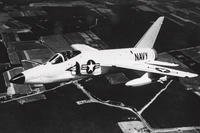On Sept. 9, 1943, Sgt. James Marion Logan's unit — the 141st Infantry Regiment, 36th Infantry Division — landed at the Gulf of Salerno. Although the Italian government had surrendered to the Allies just hours earlier, occupied Italy was rife with German tanks, machine guns, and troops. Allied units hoped to eliminate nearby outposts and then seize the port of Naples. Once Naples was secure, the 36th Infantry Division, two divisions of the British Fifth Army, and Allied commandos would join the British Eighth Army for a drive on Rome.
Like the others going ashore that day, Logan's regiment was raked with machine-gun fire. Still, the soldiers gained 800 yards inland three and a half hours after the invasion began. Logan's company took up positions on the bank of an irrigation canal when German gunners counterattacked from a rock wall a short distance away. Leaving his cover, Logan moved into the gunfire and killed three Germans as they came through the wall. He then attacked the machine-gun position, killing the two Germans who manned it and smashing their gun on the rocks.
But Logan's work was not finished. He captured an officer and a private who were trying to sneak away. Later in the fight, a sniper hiding in a house attacked the company. Logan withstood heavy fire for almost 200 yards, shot the lock off of the door, and killed the sniper.
On June 6, 1944 — D-Day — Sgt. James M. Logan was awarded the Medal of Honor and the Distinguished Service Cross. His Medal of Honor citation reads, "The conspicuous gallantry and intrepidity which characterized Sgt. Logan's exploits proved a constant inspiration to all the men of his company, and aided materially in insuring the success of the beachhead at Salerno."
















